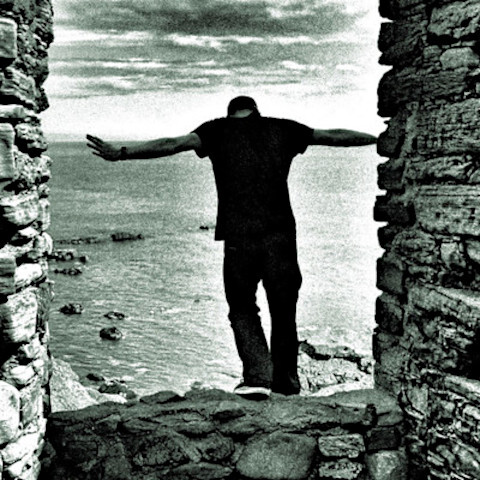Hey! HEY!
For many calibers, we often still call them by their size in inches.
All of these are named by the diameter of the bullet in inches.
eg: .22 means .22 inches.
-rim fire-
.17 hmr
(basically a .22 WMR necked down to .17. rising in popularity as a kind of… more powerful, faster thus flatter trajectory, replacement for longer ranged .22 shooters)
.22 short
(early revolver round, early semi auto round, still used fairly widely for both, today)
.22 long rifle
(still widely used today in carbines and revolvers, as well as down caliber’d variants or kits for ‘meaner’ looking semi-autos)
.22 WMR
(.22 lr, but magnum. big boy .22)
-center fire-
.223
(the 5.56 before the 5.56 was NATO standardized. very short summary: they basically just put more gunpowder in a .223, and called that 5.56x45. many in the US still use weapons that are made for .223… but you’re gonna want to upgrade your barrel to something that can handle the greater gun powder in 5.56 if you are not a fan of your gun exploding in your face when you fire it)
.38
(many variants of this exist, most notably the .38 ACP for semi autos, and the .38 special for revolvers)
.40, or ‘forty cal’
(early attempt at making something meaner than a 9x19mm, led by the FBI, less generally popular today, but was very popular with the FBI for a while)
.45 ACP
(the caliber of the iconic Colt 1911)
.300 blackout
(an ‘intermediary’ round that is between the NATO 5.56 and 7.62, often used with suppressed weapons)
.357 magnum
(very, very common revolver round. Sig Sauer actually at one point made a .357 sig for use in semi autos… don’t think anyone really uses those any more)
30-30, or ‘thirty thirty’
(lever action carbine round, been around for over 100 years, like the .357, probably not going away anytime soon, as the lever actions that shoot them have not only remained fairly popular, but also are currently having a bit of a rennaissance with many gun makers in more legally restrictive states offering ‘tactical’ lever actions with modern housing, collapsable stocks, optics mounts etc)
30.06, or ‘thirty ought six’
(basically, a 7.62 NATO that’s 12 mm longer, used to be standard in military springfield rifles, also used in the BAR, still used by many hunters today in some kind of rifle)
.338 Lapua Magnum
(specialized sniper rifle round… if you don’t count 50 BMG or even larger, anti-materiel rounds, the lapua has the longest recorded, confirmed sniper kill in history… though this may possibly now be incorrect as of the RussoUkraine conflict… point is, its a very capable sniper cartridge, good deal of wealthier US hunters and long range target shooting enthusiasts love it as well)
.410
(for some estoeric reason, this skinnier shotgun round is not referred to with the standard ‘gauge’ nomenclature)
.44 magnum
(dirty harry’s revolver caliber, which will take your head clean off, assuming you do not feel lucky)
45-70
(older, fuck off huge revolver / lever action round)
‘50 cal’
(can refer to either the .50 AE, famously used in the Desert Eagle, or the .50 BMG, used in the ‘Ma Deuce’ M2 Browning Heavy Machine Gun, and the Barret M82 Anti Materiel Rifle)
…
I’ve almost certainly missed a good number, point being, us American gun nuts… and/or gun nerds… yeah we learned metric, but we still use inches/imperial all the damn time.
We really only call NATO standardized rounds by mm. 9mm, 5.56mm, 7.62mm… and I guess the 6.8 grendel, and newer 6.8x51mm round the Sig Spear / M7 uses… and also I guess we size grenade launcher rounds in mm, but uh, …civillians generally don’t get live grenade launcher rounds in the US.
We had to draw the line somewhere rofl, and apparently it is grenade launchers, hahahah.
M’erican here. My workshop is 100% metric. I do far too much measuring, designing and planning to fuck around with inches, feet and football fields. Motherfuck the imperial system. America has been robbed of the superior until of measurement. Every last bit of my work is in millimeters and it will be that way until I die in a horrible firey accident in my shop because beer and dangerous power tools are just too much fun when taken together.
The only thing I will hand to the imperial system is how it uses inches. Then again that’s really a part of the system but of its practical use.
What I like is the use of parts of inches. Especially the fractions which are powers of two. Very useful. That’s a little difficult with the cm and mm because they’re already so small. And a dm is quite large on the other hand.
I know my uncle uses inches to make flutes e.g. Supposedly helps with getting things lined up and accurate to tune. I dunno. But yeah. Otherwise, metric ftw.
What I like is the use of parts of inches. Especially the fractions which are powers of two. Very useful. That’s a little difficult with the cm and mm because they’re already so small.
What? With millimeters you barely have to use fractions because it is so small, how is that a negative? Fractions are also way harder to understand if you need to het precise
Not flute working but sewing, and I know it sounds insane, but mm is just to small to be practical. It’s one or two strands of tread whereas 1/4 or even 1/8 gives a proper piece to cut of.
And 1/4 inch seem allowance is just so much less bulky than the standard 0,75 cm, and so much more intuitive for me to work with … and f. I just realized that all my arguments for using inches are based on habits…
Even though I’m european I never really applied cm in anything but homework and therefore never got a real sense of it. And a lot of the nice sewing patterns are in inches so that’s where i started.
Well habits are valid and in the end a cm is just as arbitrary as an inch, but converting between units is just objectively easier with metric
9mm Parabellum was designed by Austrian George Luger 10mm Auto was designed by FFV Norma AB of Sweden 5.56 NATO was developed in Belgium by FN Herstal, as was 5.7mm 7.62×39mm was developed by the Soviets
These European cartridges all use metric measurements
.223 Remington, .308 Winchester, .30-06 Springfield, .40 Smith & Wesson, .22lr, .357 Smith & Wesson Magnum, .44 Remington Magnum are all American made cartridges that use decimals of Imperial measurements Original designer’s name gets includes because, well, capitalism lol
I think one of the few exceptions might be 6.5mm Creedmoor, developed by Hornady
No love for 300 blackout
And the only time they use the proper date format is their national holiday.
The US date format makes sense in the US. In a culture where days blur together endlessly in an endless slog of creating value for shareholders, the month is more important information than the day.
Priorities.
We use it for drugs thank you very much.
They also measure displacement in ICE engines. You never see a 2 Quart muscle car (I’m guessing, I have nfi what a quart is)
And the druggies. Somehow, they had no trouble switching to metric.
How dare you!
We also measure our drugs that way
And our largest bottles of soda.
That’s done intentionally to obfuscate the quantity, since most Americans can more easily estimate a half-gallon. It’s to encourage consumption.
And alcohol!
And the temperature of electronic components for some reason
Lower numbers look better for that so it’s like a cheat code for them.
“wow, if I buy this gpu, my room will be literally freezing when I’m not playing a game, and it warms up to around 80 once I launch something? The fuck do I need an air conditioner for?”
And some science stuff. Often related to drugs.
And computing.
.223: Proper American rifle round.
5.56: Communist European rifle round.
5.56 puts out slightly higher pressures. I used to have a bolt action .223 rifle that wasn’t rated for 5.56. I sold it to an old guy in the country who was going to use it to kill coyotes stalking his chickens and small livestock.
Most of us know what two liters of carbonated sugar water looks like.
Hey, that’s flavored carbonated sugar water if you don’t mind.









